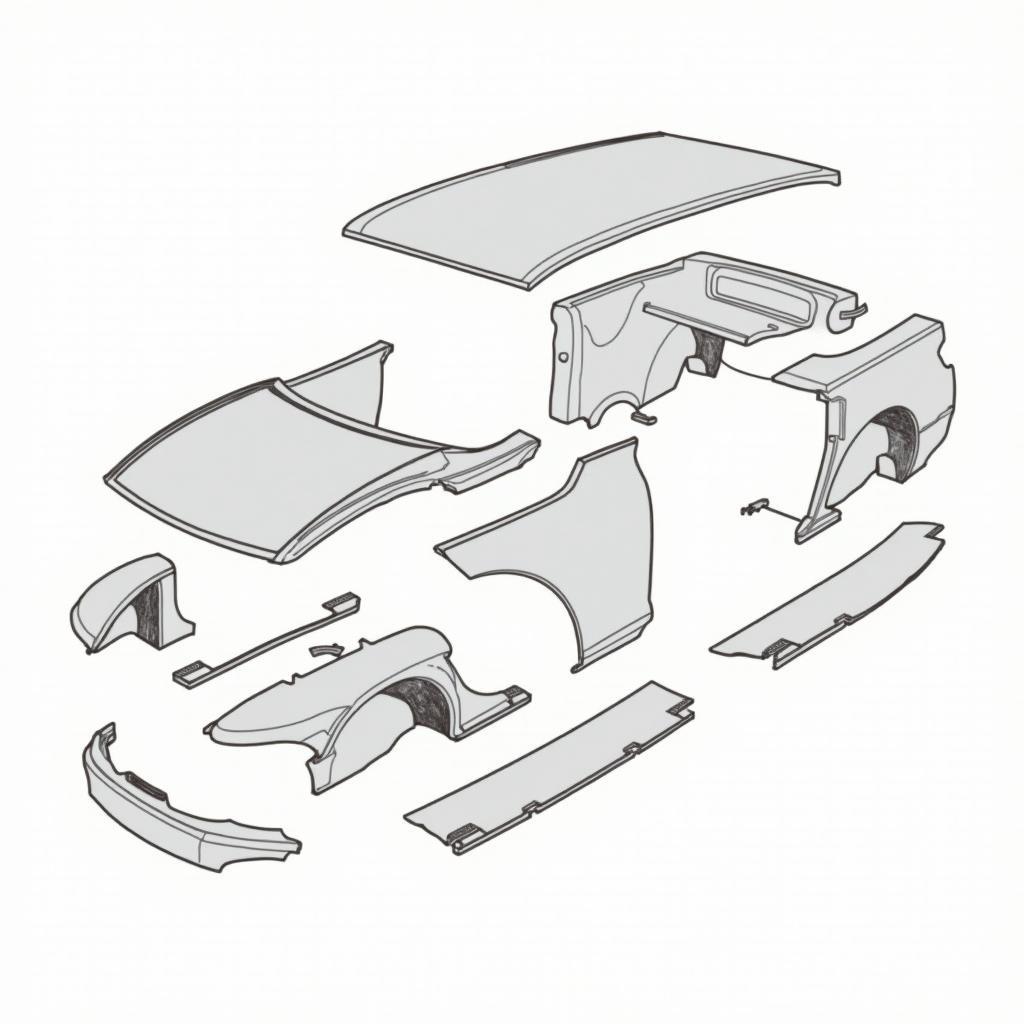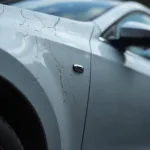Navigating the world of car body repair can feel overwhelming, especially with the technical jargon and intricate processes involved. Whether you’re a DIY enthusiast or just want to understand the basics, a comprehensive car body repair manual is crucial. This guide serves as your digital companion, providing valuable insights, tips, and essential knowledge to tackle those dents and scratches with confidence.
Understanding Car Body Repair Essentials
Before diving into repairs, it’s crucial to grasp the fundamentals of car body construction and the tools involved. Most modern vehicles are built with steel or aluminum panels, each with unique properties and repair requirements.
A well-equipped toolbox is a must-have for any car body repair enthusiast. Essential tools include:
- Hammer and dolly set: Used for shaping and smoothing out dents.
- Body filler and spreaders: For filling in scratches, dents, and imperfections.
- Sanding blocks and sandpaper: To achieve a smooth surface before painting.
- Painting equipment: Including spray guns, primers, paints, and clear coats.
Understanding the different types of damage is also key. From minor scratches to major dents, each requires a specific approach and repair technique.
Step-by-Step Guide to Common Car Body Repairs
Let’s explore some common car body repairs and how to approach them:
1. Repairing Minor Scratches and Paint Chips
- Clean the area: Thoroughly clean the scratch or chip with soap and water, removing any dirt or debris.
- Sand the area: Use fine-grit sandpaper to smooth out the edges of the scratch or chip.
- Apply touch-up paint: Carefully apply touch-up paint that matches your car’s color.
- Level and blend: Allow the paint to dry completely and then use a polishing compound to blend the repair seamlessly.
2. Fixing Small Dents
- Assess the dent: Determine if it’s a simple dent that can be pulled out or requires filler.
- Use a dent puller: For accessible dents, a dent puller can be used to gently pull the metal back into shape.
- Apply body filler: For deeper dents, apply body filler in thin layers, allowing each layer to dry before sanding.
- Sand and prime: Once the filler is dry, sand the area smooth and apply primer before painting.
3. Handling Rust Spots
- Remove rust: Use a wire brush or grinder to remove all traces of rust.
- Apply rust converter: Treat the affected area with a rust converter to prevent further corrosion.
- Fill and sand: Fill any depressions with body filler and sand the area smooth.
- Prime and paint: Apply primer and paint to protect the repaired area and match the car’s finish.
car body repair what gauge steel thickness
Remember, these are just basic guidelines. The complexity of the repair will depend on the extent of the damage.
Safety First: Essential Precautions
Car body repair often involves potentially hazardous materials and tools. Always prioritize safety by:
- Wearing protective gear: This includes gloves, safety glasses, and a respirator when working with chemicals or dust.
- Working in a well-ventilated area: Ensure adequate ventilation to avoid inhaling harmful fumes.
- Disposing of materials properly: Dispose of chemicals, paints, and other materials according to local regulations.
Seeking Professional Help: When to Call the Experts
While DIY car body repair can be rewarding, certain repairs are best left to professionals, such as:
- Extensive frame damage: Requires specialized equipment and expertise.
- Airbag deployment: Involves complex systems and safety concerns.
- Major structural repairs: May compromise the vehicle’s structural integrity if not done correctly.
Conclusion: Empowering Your Inner Auto Body Technician
Mastering car body repair requires patience, practice, and the right knowledge. By following this comprehensive guide and arming yourself with a reliable car body repair manual, you can confidently tackle those automotive blemishes and keep your vehicle looking its best.
Frequently Asked Questions (FAQs)
1. Can I use household items for car body repair?
While some household items might seem tempting, it’s best to use proper automotive repair tools and materials to ensure a safe and quality repair.
2. How long does it take for body filler to dry?
Drying time varies depending on the type of filler and environmental conditions, but it generally takes a few hours to dry completely.
3. What is the best way to match touch-up paint?
Refer to your car’s owner’s manual or look for the paint code, usually located on a sticker inside the driver’s side door jamb, to find the exact paint match.
4. Can I repair rust without repainting the entire panel?
It depends on the extent of the rust. Small rust spots can often be repaired without repainting the entire panel, but larger areas might require professional attention.
5. How do I prevent future rust after a repair?
Applying a rust converter, using quality primers and paints, and ensuring proper drainage are crucial to preventing future rust formation.
a typical risk assessment for a car body repair garage
Looking for more car body repair tips and advice? Check out our other informative articles on our website!
Need expert assistance with your car body repair? Contact us via WhatsApp at +1(641)206-8880 or email us at [email protected]. Our dedicated support team is available 24/7 to help you with all your car repair needs.



